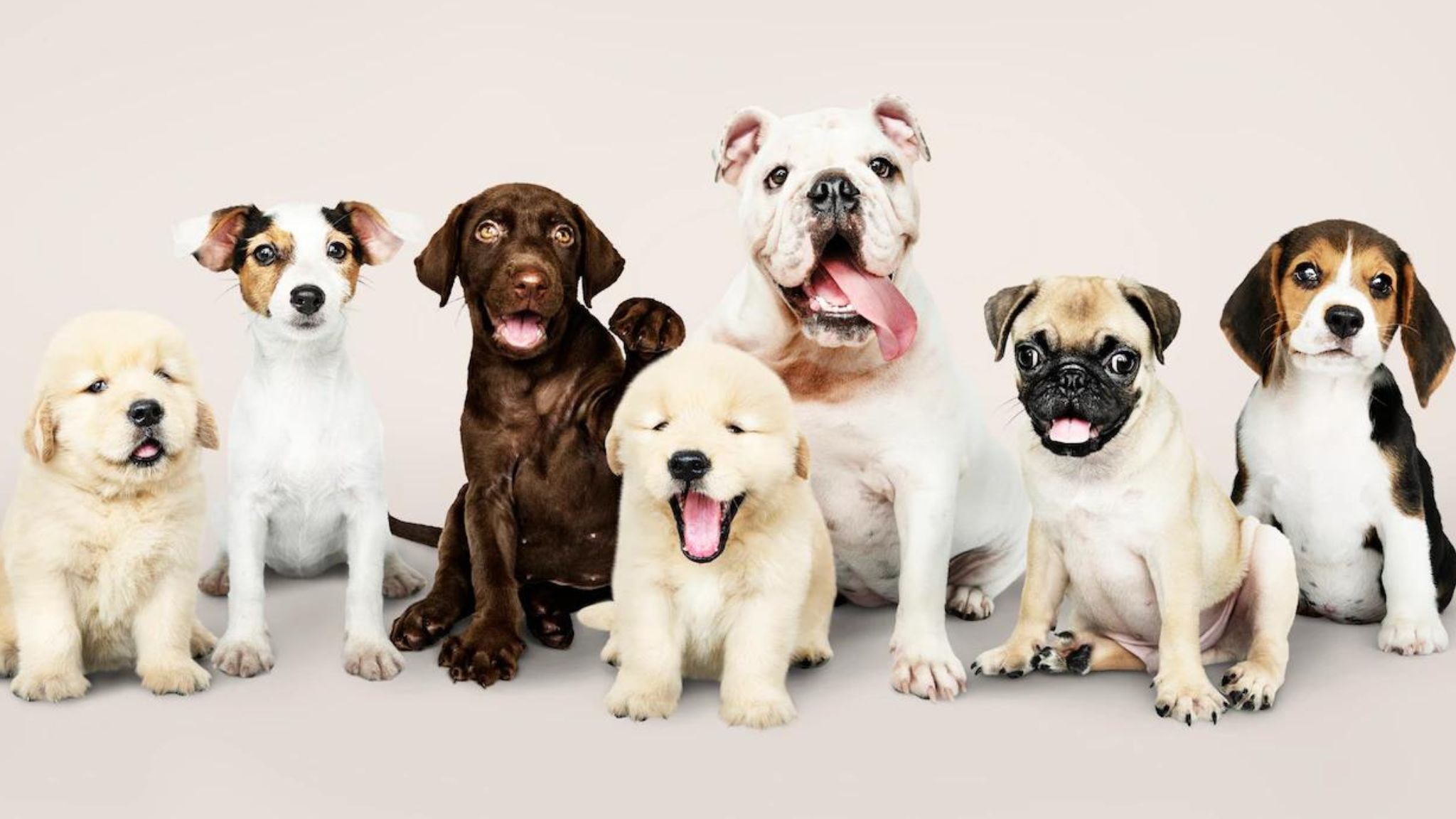Do you intend to acquire a puppy? Do you want a large or tiny dog, one with long or short hair, one that is purebred or has a nice mix of breeds? Have you discovered a litter of puppies for sale? Do you have the skills necessary to select the ideal puppy from the litter to call your own?
When obtaining a new dog, there are many things to take into account, such as the size of your home, how much time you have for play and exercise, and the expense of veterinary care.
There are a lot of things that may cross your thoughts when you decide to have a puppy. If you are anything like the majority of people, you have devoted countless hours to viewing movies, learning about various breeders, and thinking about the hunting expeditions that you and your dog will one day have.
You can also be thinking about and doing a study on how to pick out a puppy with a good temperament. If so, you are moving in the correct direction.
Finding the ideal breeder is the first step in choosing the best puppy for you. Finding a breeder will allow you to start the process of choosing your puppy.
How Can You Know What the Puppy’s Personality Will Be?
Even though it’s too early to do a precise temperament test, you may still get a basic idea of your pup’s disposition.
Does he appear to want to play? When you extend your hand and invite his touch, does he smell it or prod it? Is he at ease among people, or does he run away when you get close? Or shows aggressive behavior?
To give the puppy a belly rubs, see if he would roll over on his back. Puppies who will hold that posture are often laid-back, but puppies who refuse to be rolled onto their backs frequently have a more independent character. It might be stressful for the dog, so don’t make him stay there without his will.
How to Perform the Puppy Temperament Tests?
While a temperament test cannot predict the future, it can give you some understanding of a puppy’s character. Remember that the puppy’s conduct as an adult will be influenced by a variety of elements, including his life events, his pet parents’ parenting, and his training.
The tests that can be run on puppies are listed below:
- Observation
The American Temperament Testing Society, Inc. temperament test consists of the exercises in this section.
The handler shouldn’t be familiar with the dog for this exam; an experienced tester will assess your dog’s answers. This initial exercise’s goal is to assess how your dog reacts to an unthreatening visitor.
The first stranger will be impartial; he will approach and shake hands with the handler before having a brief discussion with the handler while oblivious to the dog.
This encounter gauges your dog’s tolerance for passive socialization as well as his propensity for showing aggression against strangers.
The second variety of strangers will interact with the dog in a friendly manner. This will assess how actively socialized your dog is.
- Play
Play with the puppy when you first separate it, and if it’s okay, offer treats and toys. Do they scramble to avoid you, search desperately for their littermates, or engage with you and climb on you like a long-lost friend? Assess their persistence and vigor.
- Cradle
Look into the puppy’s eyes while holding it on its back like a newborn and placing a gentle palm on its chest. Puppies who consent to this handling are seen as biddable, but puppies that object are more likely to be independent-thinking.
- Call back
As you move away from the puppy, call to them while holding out a treat or a squeaky toy. Do they willingly follow you or do they hesitate and need to be coaxed? Do they run after you while leaping or biting your ankles?
- Tuck and Pat
Place the puppy between your legs while seated in a chair or on your knees. Long, delicate strokes are used to pet them as you quietly compliment them. Do they wiggle away when you nibble at them, wriggle, and then relax, or do they just melt in your arms?
- Bend Over
Get up, relax, and stretch. Go over to the puppy now and lean down to pet it. Given your size and the pup’s size, the pup may perceive your actions as being overwhelming. Do they run up to your face, shrink in fear, or just let it go without any reaction?
- Hold the Back Leg
You are putting the puppy through this activity to gauge how it will respond to discomfort. Lift the puppy’s right rear leg 2 inches off the ground while caressing it, then keep it there for 5 seconds (although either leg would do). Do they respond in defense?
If so, they are unquestionably a very sensitive type. While a P puppy will display concern, a puppy may softly kiss you or rest its tongue on you.
- Startle With Sound
Tap two metal spoons together behind the back of your potential dog, then drop them 3 inches from where they are standing. Determine their response: Do they flinch and appear startled? How soon do they feel well enough to investigate the spoons or grab a goodie from your hand?
- Do the Crash Test
When the puppy stops showing any interest in you, wait while standing still. Suddenly hit the floor and yelled, “Ouch!” Does the dog rush up and jump on you (A), approach to sniff or lick your face, or cower and flee in fear?
- Uplift
Cradling the puppy’s middle will raise them 4 inches off the ground. Hold them still for a minimum of five seconds. Are they squirming and biting ferociously? Do they unwind and scan the area? Are they frightened-looking and hunched over?
How to Pick a Healthy Puppy? A Buyer’s Guide
A dog is pretty much the simplest thing in the world to fall in love with! But let’s just take a step back before dialing the number on that Gumtree post or messaging the man on Facebook with litter that needs a home.
Finding a pet that fits your lifestyle and surroundings is crucial. They may start tiny, but they rapidly expand, and if you haven’t done your homework and made a wise choice, you can be in for some unpleasant surprises.
Here is our guide on things to watch out for when choosing your puppies, from picking a supplier to selecting from a litter.
- Talk To the Owner
Before viewing the pups, you should call the breeder when you first get in touch with them to discuss your plans. This is done so that you may inquire about their breeding procedures without having your opinion tainted by those adorable pups. To make sure you’ll be a decent owner of one of their puppies, a good breeder will also want to ask you questions about your residence and way of life.
- Observe the Littermates in Action
The best match for a happy family will frequently be choosing (or having the breeder chooses) the puppy who is neither first nor last when called, is neither shy nor aggressive with littermates, and is neither outstanding nor underwhelming in the litter. This puppy will also be simple to train, manage, and adapt to your daily life.
- Survey Their Overall Appearance
Do the pups have shiny coats? Are they flaky or dull? Do you see any sores or bald spots? Puppies should have glossy, healthy coats that don’t have any patches of redness or hair loss.
- Watch Them Move
Do they walk on all fours or just one? Is anyone with a limp? Puppies walk awkwardly, but they should distribute their weight evenly among all of their limbs.
Frequently Asked Question
Q1: How Do You Tell If A Puppy Will Be A Calm Dog?
Following are the signs that indicate your puppy will be a calm dog:
- Neither arrogant nor timid.
- Plays and interacts with siblings joyfully.
- Neither steals toys nor picks fights. Battle or divide a toy to get it back.
- Displays submissive behavior toward more dominant puppies, but she rarely rules timid puppies.
- Likely to remain in the middle of the pack or close to his mother.
Q2: Can You Tell a Dog’s Temperament as a Puppy?
When a puppy is 7 to 8 weeks old and old enough for a temperament test, the puppy’s life experiences have already had an impact on temperament. Even at this young age, it’s impossible to say for sure that a certain trait is entirely inherited and not at all learned.
Q3: Which Puppy Should I Choose From The Litter?
The ideal match for a happy family is frequently the puppy that is neither first nor last when called, timid or aggressive with littermates, or exceptional or disappointing in the litter. This puppy will also be simple to teach, handle, and fit into your everyday life.
Conclusion
One key will significantly alter the outcome of everything that has been mentioned thus far. It’s up to you.
Whatever puppy you decide to have, you have the chance to take it and make it everything it can be. You will receive more in exchange for greater input.
It will take time to assist your dog in realizing all of its potential. It requires devotion, time, and work. Having said that, it is among the most unforgettable experiences you can have. Your investment in your dog will provide you with years of pleasure and create memories that will last a lifetime.

